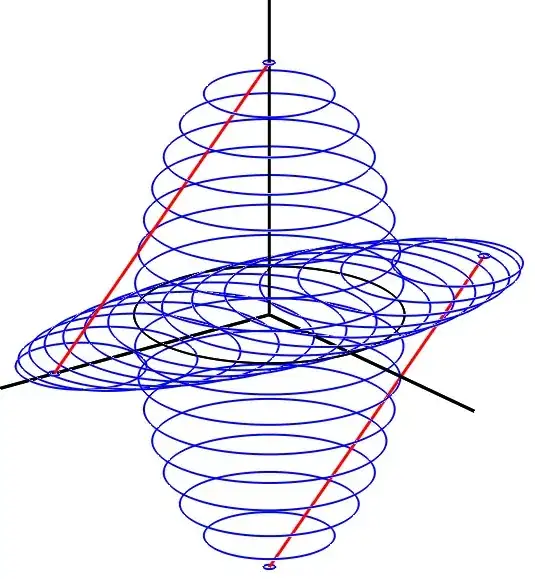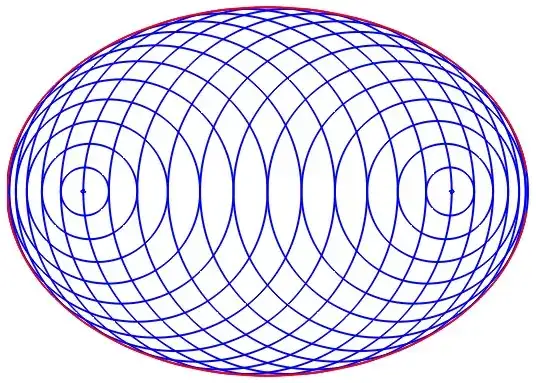Being given any prescribed ellipse curve, it is possible to find a parametric family of circles having this ellipse as its envelope (see figure 2 below). The more circles you take, the more precise you are.
How are these circles obtained? As an oblique projection of level sets of an ellipsoid (Figure 1) with equation:
$$\tag{1}x^2+y^2+\dfrac{z^2}{c^2}=1 \ \iff \ x^2+y^2=1-\dfrac{z^2}{c^2}$$
i.e., as circles of radius $r:=\sqrt{1-\tfrac{z^2}{c^2}}$.
These circles are parametrized by $z$ with parametric equations:
$$(C_z) \ \begin{cases} x=r \cos(u)+z\\y=r \sin(u) \end{cases} \ \ \text{for any } z \in [-c,c].$$
Here is a Matlab program that generates this family of circles (changing the value of parameter $c$ changes the eccentricity of the generated ellipse):
clear all;close all;axis equal;axis off;hold on
c=1;
u=0:0.01:2*pi;
for z=-c:0.1:c;
r=sqrt(1-(z/c)^2);
x=r*cos(u)+z;
y=r*sin(u);
plot(x,y);
end;
In fact there are two circles with radius 0, i.e., points that are the foci of this ellipse. This will become clearer with the following modification and its physical interpretation :
In fact, one can have more evenly spaced circles (it is in this way that Figure 2 has been generated) by setting $z=c \sin(t)$ for parameter $t \in [-\tfrac{\pi}{2},\tfrac{\pi}{2}]$. It means that the loop in the program above is to be replaced by :
for t=-pi/2:pi/24:pi/2;
x=cos(t)*cos(u)+c*sin(t);
y=cos(t)*sin(u);
plot(x,y);
end;
A nice physical interpretation of this new family of circles is as sound waves propagation (see fig. 2) (http://www.math.ubc.ca/~cass/courses/m309-01a/dawson/index.html).
Remarks about machining concerns:
it is easy to retrieve the intersection points of successive circles where the tool must proceed to the next arc (dropping of course certain circles that remain interior to the elliptical envelope).
a better fit can be achieved by introducing tangents between the arcs. A supplementary benefit would be to obtain a smooth curve, but without continuity of the derivative.

Fig. 1: Oblique (45°) projection on plane xOy of the level sets of the ellipsoid (called "prolate spheroid") with equation (1).

Fig. 2: Sound waves propagation interpretation: A sound emmitted from one of the foci of the ellipse is reflected on the ellipse and concentrated in the other focus.

